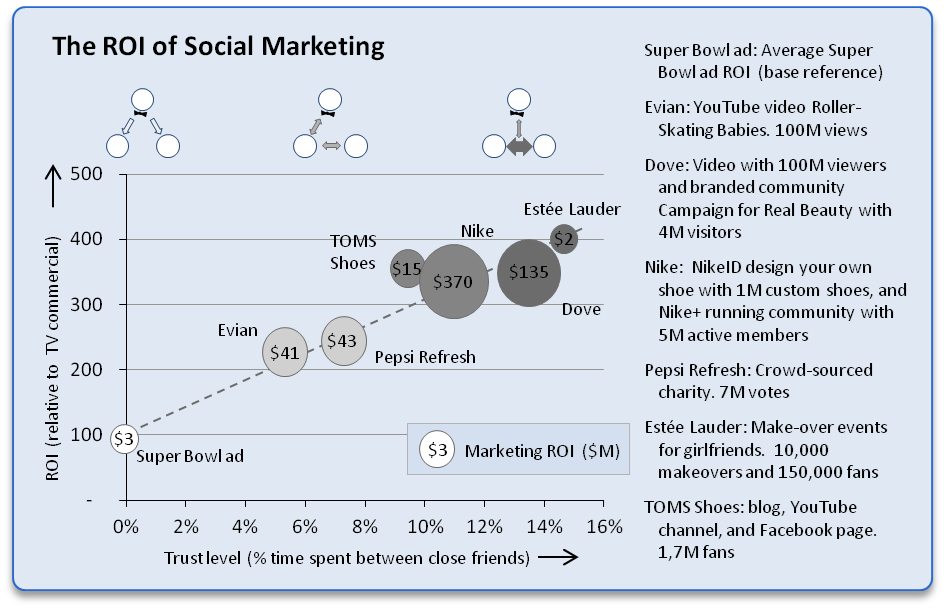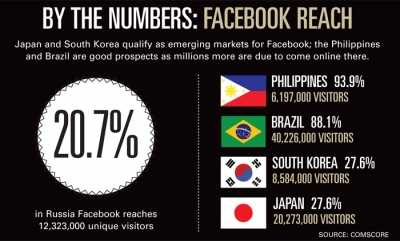There must have been a time you thought about the actual returns a social media campaign brings about. More importantly, how would one calculate those returns? As a CFO of large company such as Nike, how would you tell if the sales growth of new running shoes was attributable to likes on Facebook? Many people see this is a controversial topic and don’t believe an exact numerical calculation exists that is feasible and applicable across all social media platforms.
A recent analysis put forward by Jaap Favier, attempts to calculate the ROI for social media campaigns. His approach is interesting and definitely worth discussion amongst marketers if not hard nose financial buffs. Let’s take a closer look at what his approach entails.
For example, when 2 or more consumers engaging with social media share a brand experience, we have something described as a ‘touchpoint’. The cumulative value of the various touch points across the entire campaign represent the increase or decrease to the Brand equity of that specific company.

The actual formula for calculating an individual touch point is determined by the following factors described by Jaap.
“Time.
Every tweet, retweet, post, comment, online video, pin, and repin takes a few seconds both to produce and digest by subsequent users.
Trust.
Look at the intensity of the online interactions between consumers to assess how close they are. A good metric for intimacy is the comment-to-like ratios of Facebook fan posts: the higher these ratios, the more close friends shared the brand experience. On Twitter, the retweet-to-tweet ratio is a solid indicator.
Sentiment.
Measure the shared sentiment between consumers by sifting through the comments and retweets. Friends use words like “fun” in their exchanges, while close friends may use words like “moving” and “emotional.”
Income.
Social marketers know the demographics of their fans and followers.”
Jaap applies his analysis to a super bowl ad, and goes on to show that social media campaigns are far more effective. For example:
30-second message from a marketer with a trust factor of 1.
33% of the 100-million odd viewers like the average Super Bowl commercial.
Their average net income is $35,500 per year, so $0.21 per minute
……….ROI of super bowl ad $3.5million

He then uses the Superbowl ad as a benchmark and compares it against social media campaigns by companies such as Estee Lauder. It is clear from his findings that the ROI of social media is up to four times greater than TV commercials.

Is Jaap’s analysis valid?
I think without measuring the actual I, investment part of the ROI equation we can’t really make any decision. Additionally the actual metrics used by Jaap might be refuted by others who decide to use other metrics or modifications of these ones. In responding to Stephen Waddington’s comment on his blog post, I believe Jaap does an exceptional job at addressing any critique:
“…I completely agree with your point that both an “R” and an “I” are included in ROI. Marketers are generally well aware of the “I” part (their budget), but struggle to assess the “R”. This blog post and the ROI model are intended to help them with that part and to let them make educated decisions while planning, running and auditing their programs. The ROI model is indeed a planning tool and not a financial reporting tool…..”
All in all I applaud Jaap for making a legitimate attempt to uncover the returns on social media.





